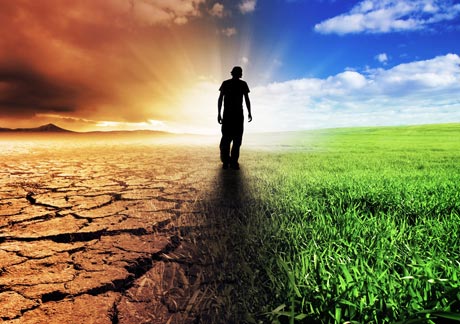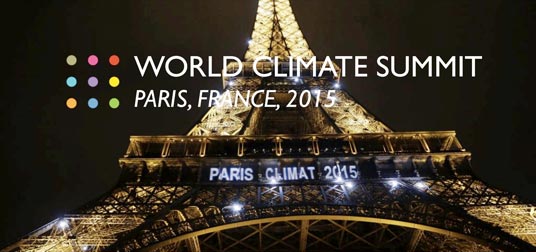On the rocky road to Paris
A new climate change agreement is
to be adopted in Paris in December, but there are big differences on how
to reach a fair deal, and the negotiations are tough.
by Martin Khor
One of the biggest global events this year is the United Nations
Climate Change Conference in Paris in December.
 A
new agreement to tackle climate change is expected, but there are many
hurdles to overcome first. A
new agreement to tackle climate change is expected, but there are many
hurdles to overcome first.
Negotiations for the Paris agreement are now taking place in Bonn.
Old unresolved issues have re-surfaced, with sharp divisions between
developed countries (the North) and developing countries (the South).
It’s hard to see how they can be settled in the remaining three
meetings, including the Paris conference.” But a deal in Paris is a
political necessity, so somehow the differences have to be bridged, or
else papered over.
Ambitious
There are two requisites for a good climate deal. It has to be
environmentally ambitious, meaning that it leads the world to reduce
emissions so that the average global temperature does not increase by
more than 2°C (or 1.5°C, according to some) above the pre-industrial
period.
That present temperature has now exceeded by 0.8°C. With global
emissions increasing by about 50 billion tonnes a year, the remaining
“space” in the atmosphere to absorb more emissions (before the 2°C limit
is reached) will be exhausted in three decades or so.
The deal also has to be fair and equitable. The North, having been
mainly responsible for the historical emissions and being more
economically advanced, has to take the lead in cutting emissions as well
as transferring funds and technology to the South to help it switch to
low-carbon sustainable development pathways.
This equity principle is indeed embedded in the UN Climate
Convention, which will house the new Paris agreement, and which is now
conducting the negotiations.
The South countries insist that this principle be at the centre of
the new agreement, and that indeed it has to be since it comes under the
Convention.
Changed
But the North countries are most reluctant. They claim the world has
changed, and all countries (except the least developed) should be
treated the same way.
By this they mean that a new regime should be created in which all
countries should undertake the same emissions reduction obligations now,
or in the near future.
In the interim, all countries should contribute in various ways to
cut their present and future emissions. And they should do this, even if
they do not get funds and technology they ask for.
The developing countries argue that this kind of attitude is
tantamount to the North escaping their legal obligations under the
present Convention, and in effect subverting the Convention’s principles
and provisions and re-writing the rules.
They are concerned that this is aimed at shifting the burden of
change away from the North to the South. Moving from the present cheap
oil-based energy system to one based on renewable energy, and other
transformations, requires a social, economic and technological
revolution that is costly.
 Will
it affect development goals? Who will pay for this cost? How to obtain
the technologies cheaply enough? What obligations should the South take
on under the Paris agreement if the North does not meet its obligation
to help out? Will
it affect development goals? Who will pay for this cost? How to obtain
the technologies cheaply enough? What obligations should the South take
on under the Paris agreement if the North does not meet its obligation
to help out?
Draft
The current Bonn session is grappling with a draft that contains the
different views. Among the key issues:
* Same or different treatment: Should countries have the same
obligations to address emissions and to provide financing (a position
favoured by the North) or have different obligations, according to their
historical responsibilities and current level of development (the
South’s view)?
* Balance on mitigation, adaptation, loss and damage: Generally, the
North is more interested in focusing the agreement on having obligations
on mitigation (reducing emissions), whilst the South is equally or even
more concerned about actions on adaptation (measures to reduce the
effects of climate change) and loss and damage (coping with the damage
caused by climate change, such as storms, heavy rain, floods, drought,
etc). The North is especially resisting loss and damage.
* Funding: The North pledged to mobilise $100bil a year for climate
actions for the South by 2020, but only a small fraction is available so
far. The South wants a firm commitment on finance in the Paris
agreement, and a road-map on how the money will increase to $100bil
between now and 2020, but this is resisted by the North.
* Technology: The South wants concrete commitments from the North to
transfer technologies needed for mitigation and adaptation actions,
including removing barriers such as lack of funds and know-how, and
intellectual property (IP) which may raise the cost. The North wants the
South to obtain technology on commercial terms, and does not want the
agreement to mention the IP issue or address know-how.
* Countries’ “contributions”: Countries are expected to submit the
“contributions” they intend to make to global climate action. The North
wants developing countries to submit figures on their maximum mitigation
obligations.
The developing countries are upset that the North is refusing to
commit any figures on funding, and many want to also include their
actions on adaptation to show the range of their contribution to global
actions. Meanwhile the mitigation commitments submitted by several
developed countries show a low level of ambition.
* Legally binding?: The Paris outcome could be a protocol or another
legally binding agreement or an outcome with legal force. How binding it
will be on countries, and what happens if they do not comply, will be
one of the final issues to be resolved.
There are also various shades of views within the developed countries
and the developing countries.
But these are among the key issues where large differences, mainly
along North-South lines, exist.
Whether they can be bridged before or at Paris remains to be seen.
The fate of our climate, and humanity’s future, depends quite a lot on
it.
- Third World Network Features.
|

